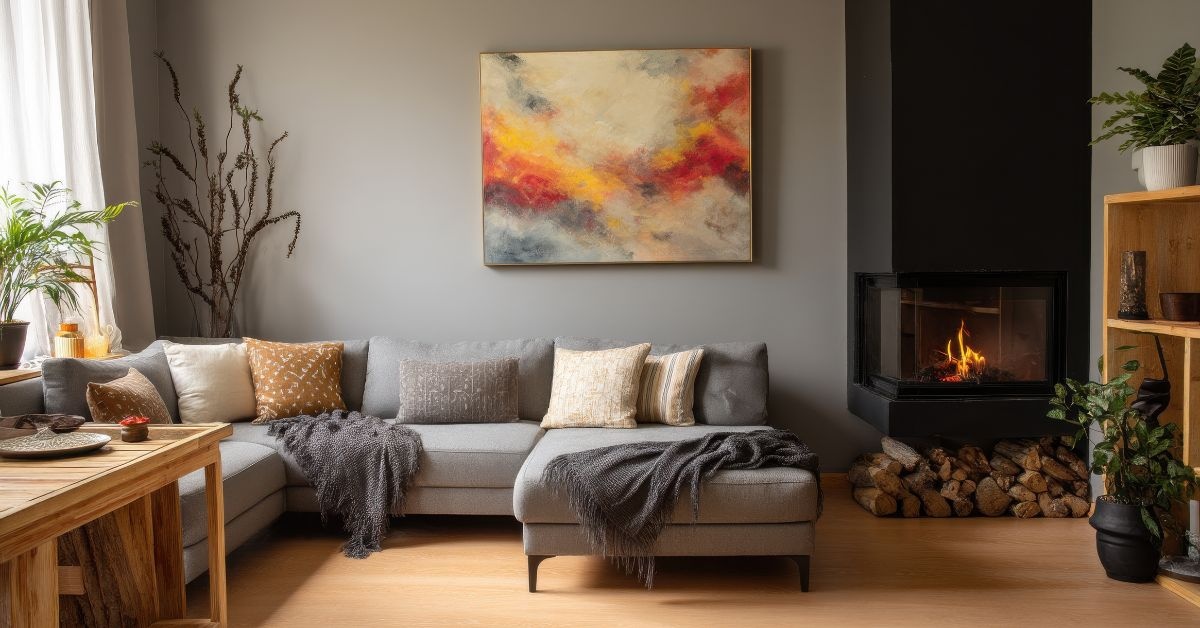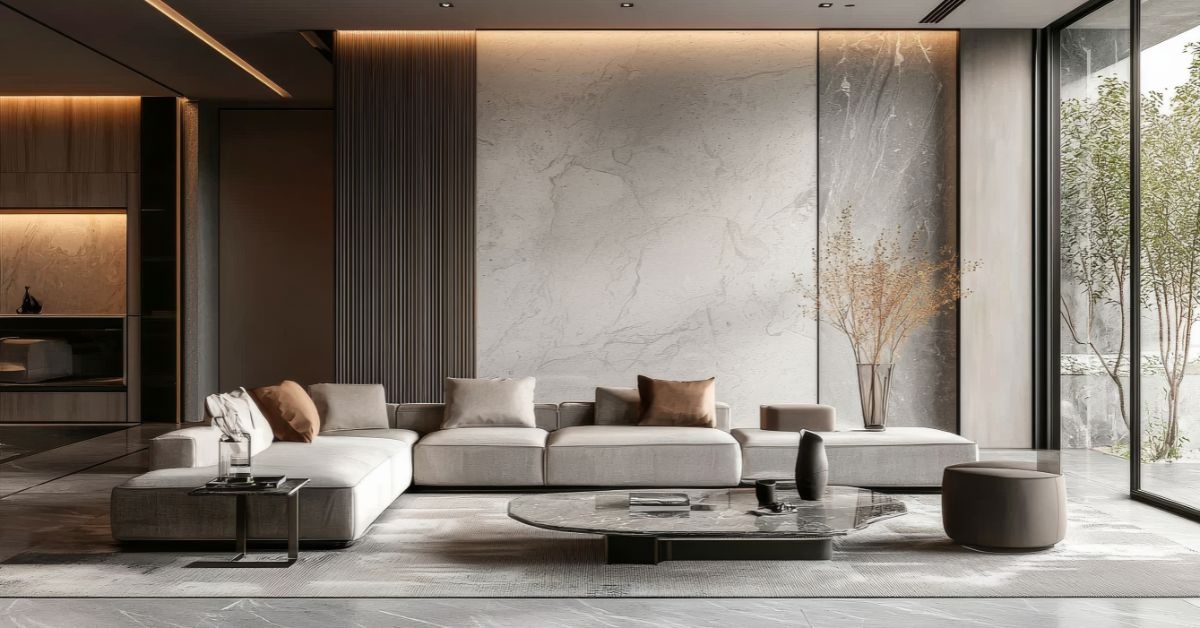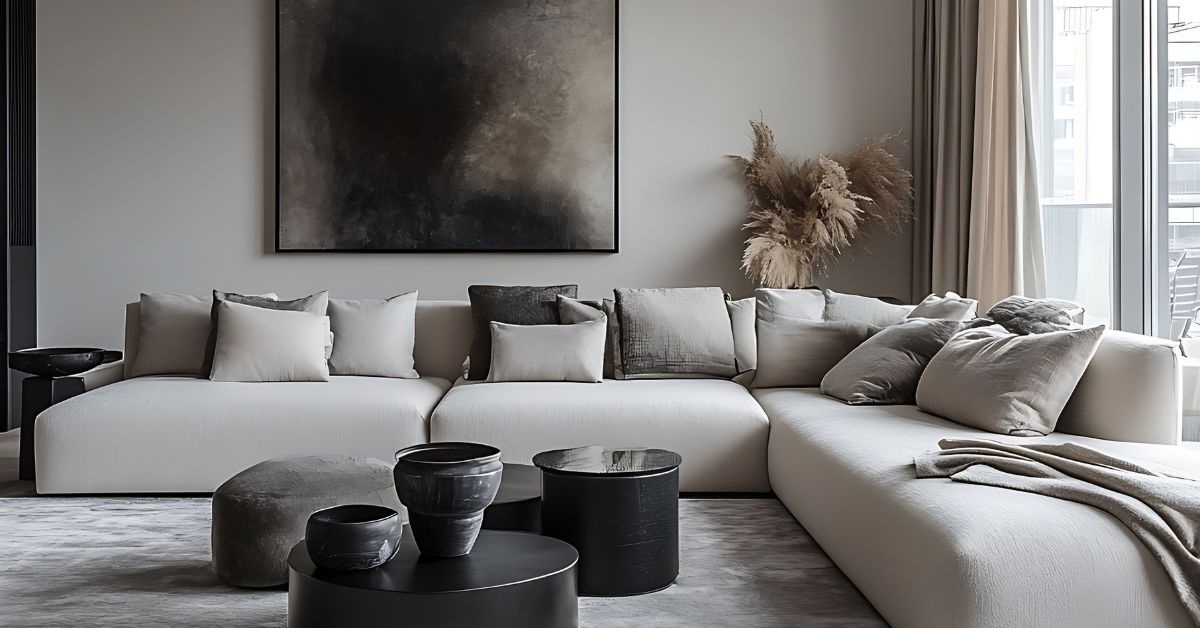
Right-Hand or Left-Hand Sofa: Which Is Right For Your Room?
Choosing the ideal sofa orientation might seem like a small decision, but it can dramatically transform your living room’s functionality and flow. Whether you’re furnishing a brand-new space or refreshing an existing one, deciding between a right-hand or left-hand sofa demands thoughtful consideration.
The direction of your sofa dictates how you interact with your space, move around it, and enjoy its features. If you’re unsure where to start, this guide will walk you through right-hand or left-hand sofas so that you can decide which is right for your room.
The Key Differences Between Right-Hand and Left-Hand Sofas
When it comes to sectional sofas, handedness refers to the orientation of the chaise or extended section when viewing it from the front. Specifically, a right-hand sofa has its extended section on your right-hand side, while a left-hand sofa places the extension on your left.
This distinction is essential when designing a living room because it influences how the piece fits into the space. Sofa handedness also determines how it integrates with other furniture or architectural features, such as windows, doors, or focal points. Visually picturing this layout before making a purchase will eliminate second guesses and start you off on the right—or left—foot.
How Room Layout Influences Sofa Orientation
The architecture of your living room plays a significant role in deciding between a right-hand or left-hand sofa. Key factors, such as the location of walls, nooks, and available open areas, will guide your decision. If your living room has a snug corner, a sectional sofa, like a left- or right-hand option, fits perfectly into that space to make it cozy and inviting.
For expansive spaces or open layouts, the handed sofa might also serve as a delineator to separate areas in a natural and non-obtrusive way. The room design almost always has the first say on sofa placement, so evaluate the layout carefully before making your choice.
Assess Traffic Flow for Optimal Sofa Placement
No one wants a sofa that impedes the natural flow of movement through a room. Assessing traffic patterns is important to make sure your furniture complements your space rather than becoming an obstacle. If your room requires frequent passage from one end to another, make sure the chaise section of your sofa doesn’t disrupt this pathway.
For example, a right-hand sofa might work better when the main access point is on the left side of the room, ensuring guests can enter without navigating around furniture. Similarly, clear passageways toward exterior views or doorways will influence whether a left- or right-hand sofa fits seamlessly into the room’s natural flow.

Why Focal Points Should Determine Sofa Handedness
Your living room’s primary focal point, whether it’s a fireplace, television, or a gallery window, plays an integral part in deciding sofa orientation. A left- or right-hand sofa will direct attention toward the focal point, subtly shaping the way you experience the room.
Placing a left-hand sofa with its chaise facing a picturesque fireplace creates an inviting seating nook. In contrast, if your TV setup is to the right, a right-hand sofa will maximize viewing angles for ultimate comfort during Friday night movies or game day sessions. The key is to position your sofa to enhance the room’s focal point rather than obscure it.
Use Sofa Orientation To Maximize Natural Light
A well-placed sofa orientation also enhances the amount of daylight your living room receives. If you’re fortunate enough to have large windows or sliding glass doors, consider how your left- or right-hand sectional might take full advantage of natural light.
A right-hand sofa, for example, could extend toward a window, creating a cozy nook for natural light readers, while leaving the rest of the room uncluttered and open. Similarly, a left-hand sofa might direct light into the room while serving as a stylish divider between seated areas and walkways. Strategically aligning the sectional’s chaise toward the light source allows you to brighten and uplift your space.
Doorways Are a Crucial Consideration
Doorways are a vital element to think about before selecting either a left- or right-hand sofa. The last thing you want is for your layout to obstruct critical entry or throughways, making your room feel cramped and inconvenient.
Leave enough clearance space around doorways for easy access to ensure a smooth layout. For living rooms with centrally located doorways, choosing a handed sofa that directs the chaise away from this point keeps the space functional while maintaining a warm and inviting aesthetic.
Sectionals Enhance Small Living Rooms
For small living rooms, sectional sofas are lifesavers when chosen carefully. By opting for the correct handedness, a sectional can provide ample seating without overwhelming the room. This approach also works well when focusing on multi-functional furniture.
For instance, a right-hand sectional might tuck into a corner and maximize seating while leaving room for side tables or floor lamps. If you’re concerned about investing in quality furniture immediately, many retailers offer a living room furniture payment plan, which lets you furnish wisely and comfortably with minimal financial strain upfront.

Corner Sofas Need Special Consideration
Corner sofas are a fantastic option for defining intimate spaces or making use of an otherwise empty corner. However, they demand particular attention regarding handedness. An incorrectly oriented sofa will make a space feel off-balance, whereas selecting the correct left- or right-hand configuration ties the room together seamlessly.
When deciding on a corner piece, think about the space’s dynamics. For a cozy reading nook, a left-hand orientation might align perfectly with reading light from a nearby window. Alternatively, in larger spaces, the flexibility of a right-hand setup frames multiple functional zones, like a dining area or home office.
Choose the Right Sofa Orientation for Open-Plan Living
Open-plan layouts, while gorgeous, can sometimes feel disorganized without thoughtful furniture placement. Choosing the correct handedness for your sectional sofa becomes especially important in these situations, as it frequently serves double duty as a boundary between spaces.
Whether dividing your lounge area from your kitchen or creating a pathway to a dining space, the right sofa orientation offers clarity to an otherwise undefined area. Favor a left-hand sectional if it integrates well with pre-existing furniture layouts or strategically hides less decorative zones like workstations.
Your Perfect Sofa Begins With You
The handedness of your sofa might seem like a minor aspect of your living room design, but it makes a world of difference when creating a functional, harmonious space. From architectural layouts and traffic flow to natural light and focal points, every detail contributes to crafting a room that feels thoughtful and inviting.
Take the time to evaluate your living room’s unique facets to determine whether a left-hand or right-hand sofa is right for your room and lifestyle. Don’t be afraid to seek professional input or try multiple arrangements virtually before committing. After all, a truly remarkable sofa transforms how you live, linger, and connect in your space.


